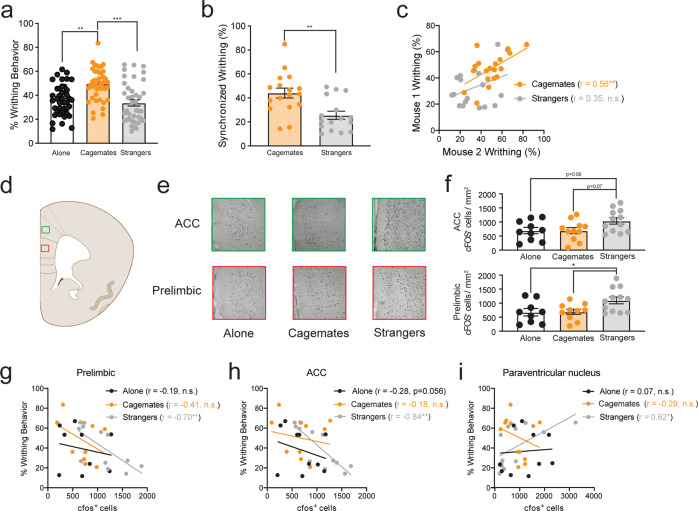Fig. 1. Social context enhances writhing behavior in familiar mice but increases c-Fos expression in the prelimbic and anterior cingulate cortex of stranger mice.
a Enhanced writhing behavior in mice paired with cagemate (n = 39) compared with mice tested with a stranger (n = 40) or alone (n = 45) (mean ± SEM, one-way ANOVA, F2,121 = 10.87, p < 0.001). Sample sizes for each condition are larger than other experiments because mice were pooled from c-Fos (Fig. 1 and Supplementary Fig 2) and western blot experiments (Supplementary Fig. 3) b Higher co-occurrence of writhing behavior in cagemate dyads than stranger dyads. Using data from a, the expected number of samples with writhing in both mice of the dyad was calculated as a joint probability. Bars represent the mean ± SEM of episodes of joint writhing expressed as a percentage (independent samples t-test, t31 = 3.42, p < 0.01). c Writhing behavior is significantly correlated between mice within a dyad for cagemates (r = 0.56, p < 0.01), but not strangers (r = 0.35, p > 0.05). d Illustration showing the target areas analyzed for the prelimbic (red box) and anterior cingulate cortex (green box). e Representative images showing c-Fos staining in the prelimbic and anterior cingulate cortex for mice tested alone (n = 10) or within a cagemate (n = 11) or stranger (n = 12) dyad. f c-Fos expression (c-Fos+ cells/mm2) is increased in the prelimbic cortex (mean ± SEM, one-way ANOVA, F2,31 = 3.76, p < 0.05) and the anterior cingulate cortex (mean ± SEM, one-way ANOVA, F2,31 = 4.36, p values for post-hoc testing were trending toward significance and are indicated on the graph). Writhing behavior in the stranger, but not alone or cagemate conditions is significantly correlated with c-Fos expression in the g prelimbic (strangers: r = −0.70, p < 0.01; cagemates: r = −0.41, p > 0.05; alone: r = −0.19, p > 0.5), h anterior cingulate cortex (strangers: r = −0.844, p < 0.001; cagemates: r = −0.19, p > 0.05; alone: r = −0.28, p > 0.05) and i paraventricular hypothalamic nucleus (strangers: r = 0.618, p < 0.05; cagemates: r = −0.29, p > 0.05; alone: r = 0.07, p > 0.05). **p < 0.01, ***p < 0.001.

